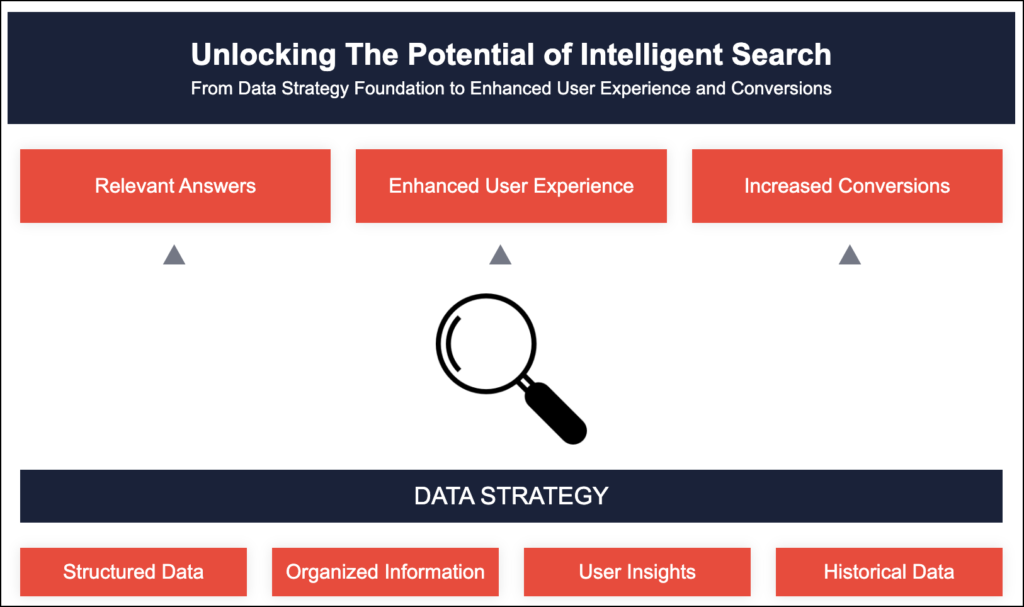“Marketing is a one-way street. Public relations, however, is a two-way street that allows communication back and forth with audiences.”
This quote echoes a message that bounced around the walls of the PR agencies I worked at early in my career.
The sentiment is accurate, but its spread fell short, likely because its arbiters were PR practitioners (LOL).
But all these years later, as a result of generative AI use in marketing — particularly its application in customer experience and engagement efforts — the idea has experienced a resurgence of sorts.
Of course these days most conversations focused on applications of generative AI in marketing revolve around marketers coping by calling themselves “prompt engineers” and CEOs exploring ways to gut content creation budgets.
But lurking underneath these developments is the message those old PR sages relayed to me so many years ago: the best way to engage prospects and create customers is via two-way conversation.
A give and take — a dialogue instead of a monologue.
Because for too long, organizations have have been standing on a ledge shouting in one direction, never considering any other way of doing things.
And unless we change course, it’s easy to imagine the nightmare ahead of us: short-sighted marketers forever shouting one-way messages into the void without ever considering that customers are actually seeking a “two-way street” exchange of information with organizations.
Oh, and that void? It’s now expanded to infinity in size due to the ever-growing, endless amount of garbage produced by generative AI.

Cue the music.
As It Turns Out, Those Old PR Sages Were Right All Along 一 The Two-Way Street Is A Necessity
Let’s get one thing straight. One-way conversations aren’t evil. They serve an essential purpose.
They are your brand, messaging and value proposition 一 all of which, in turn, drive your marketing efforts.
Perhaps most important, they form the foundation of your SEO strategy, which is crucial for being discovered by search engines.
So yes, while these one-way conversations are absolutely vital, when it comes to search, it’s often presumed that once your website is discovered, potential customers will immediately find all of your beautiful content and immediately have everything they need to make a purchasing decision.
Unfortunately, that type of searched-based standard operating procedure is slowly going the way of the buffalo.
And that’s bad news for a not insignificant amount of organizations that continue to give customers what they think they need, instead of what customers actually need.
This myopic view of content, search and the customer experience will soon become critical to sales success within these organizations.
Because humans are changing how we ask the machines questions and they have yet to consider the consequences.
Traditional Search and Discovery Has Been Broken By Generative AI
The questions of Who, What, Where, and When no longer drive discovery like they used to.
For instance, an individual will typically search for products (Who), services (What), restaurant locations (Where) and operating hours (When).
For B2B prospects in the market, an analogy might look like a search for software vendors (Who), specific functionalities or applications (What), compatibility with existing systems (Where), and product release dates (When).
The request for this information is sent and a set of static results comes back in the form of the search engine results page (SERP).
If marketing has done a good job, your organization will appear in the first few positions of the SERP, your prospect will click the link, and they are now on your website. Classic lead generation by way of content marketing and SEO.
But that model of search-based lead generation that B2B marketers know and love? It’s unraveling furiously in front of our very eyes.
“But that model of search-based lead generation that B2B marketers know and love? It’s unraveling furiously in front of our very eyes.”
That’s because generative AI has changed the game by introducing answers to deeper questions that tackle Why and How.
Search Generative Experience (SGE) results currently in use by Big Search now deliver answers to the Why and How questions by summarizing available web content and condensing it into quick and clear overviews using generative AI.
But, Why and How questions typically asked by B2B prospects demand more than just quick answers at the top of the SERP. These users seek answers that offer breadth and depth. And, more often than not, consulting a variety of sources for multiple perspectives is needed as part of the process.
Okay. So you’re a B2B organization. Right now you’re probably asking what this all means.
Think of it this way. Who, What, Where and When queries are made by top-of-funnel prospects. They can get answers to these questions from the static SERPs with a single query.
But Why and How questions are posed by middle and bottom-of-the-funnel prospects — individuals more serious about making a purchase and seeking answers to deeper questions.
“Okay, seriously. What the hell are you on about?”
– You, probably
Big Search will always be better at answering the simple questions. They’ve been doing it for years via enhanced descriptions, rich snippets, knowledge graph panels and everything else schema markup enables. Top-of-funnel prospects have always been able to find answers to these questions right on the SERP without the need to click a link to your website.
But comprehensive answers that provide solves to real-world business challenges will always be in demand. And that’s exactly what middle and bottom-of-the-funnel prospects seek.
As a result, organizations need to facilitate a search experience that allows prospects to land on their website to find in-depth answers to those difficult questions.
Because quick and dirty generative AI produced answers at the top of SERPs won’t always cut it.
Organizations must deliver answers to these Why and How questions in the form of search engine optimized content that demonstrates expertise and competitive differentiation via in-depth, informative and useful content, so prospects can get what they need to make informed purchasing decisions.
Wait a second. Doesn’t that sound exactly like SEO as we’ve always known it?

Yes. It’s true. The fundamentals of search and content marketing have changed very little.
Your content still needs to be stellar to be found in search. In fact, it needs to be more in-depth, more informative and even more useful in order to lead middle and bottom-of-the-funnel prospects to your website and avoid the slight chance AI overviews do partially answer some of those challenging questions posed by B2B prospects.
And when they get to your website? Well, here is where things have changed. This is where intelligent search comes in. And where the two-way street information exchange experience begins.
How Generative AI and Your Data Strategy Are Key to Powering Intelligent Search on Your Website
Okay, Let’s assume you’re part of one of the roughly 1/3 of companies (as evidenced here, here and here) that have a data strategy or deliver on one. Good news — you’re ahead of the curve.
If you do not currently have one, while not great, if you could truly benefit from one, there’s still time. Some resources to get you started start can be found here and here.
A data strategy is formed by collecting and structuring company data with the goal of using it to deliver insights, help solve day-to-day business challenges and make informed decisions.
A data strategy is the foundation from which intelligent search applications are built upon, which help facilitate delivery of a variety of customer-focused benefits.
Simply stated, a data strategy forms the backbone for the build-out of intelligent search applications and the numerous customer benefits such applications bring with them.

Yup. I made this.
But building a company-wide data strategy is not an informal project that can be completed in a day.
Depending on the size, sophistication and depth of technology associated with your organization, developing a data strategy can be a complex process that requires a seriously considerable amount of time.
For perspective, even for a young startup with a much shorter runway of data than a mature enterprise, the process could still take a year based on the specific goals of the project, the quality of the data on-hand and the talent hired or assigned to manage it.
A major lift involved in developing a data strategy is gathering and organizing data. A promising indication of forward movement on a data strategy is that the necessary information being sought already likely exists and is easily accessible.
That is of course unless it all resides in the ruthless and stubborn silent killer of data strategy dreams known as the data silo.

Actual footage of a data silo on its way to ruin your life.
Another promising indication of potential progress on a data strategy buildout is that in certain circumstances, generative AI can aid in structuring and making sense of the data you feed it. Of course human oversight will be an absolute must to ensure accuracy, context and relevance.
But even these rays of light do not outweigh the many other factors and potential roadblocks organizations must consider before diving into data strategy development.
In the interest of transparency, here are just a few examples of the many that are possible.
- Do You Really Need It? It might seem obvious, but the initial phases of planning a data strategy might show the costs outweigh the benefits. It simply may not be worth it just to hop on the train of utilizing generative AI for marketing efforts. Recognizing the necessary investments — time, technology, hiring the right skills — might bring the conclusion that the project just isn’t prudent. Organizations need to consider the over/under on moving forward with one based upon established company goals, resources, budgets and more.
- How Quality Is The Data? An effective data strategy needs quality data from sources rich with customer insight. Think CRM systems, feedback collected from customers, web analytics, etc. All this data needs to be integrated to ensure a thorough understanding of user needs and behaviors. Is that type of data available? And is it reliable? Nothing of value can ever be built upon a shoddy foundation.
- Can You Scale? Another consideration is whether you can build a strategy capable of scaling with your business as it grows and takes in more diverse data. Ensuring scalability requires careful planning and the availability of resources. Without the right pieces in place long-term sustainability might not be in the cards.
But all of that said. All of it.
And beyond the efficiencies, competitive advantages and workflow improvements a data strategy delivers.
The biggest benefit one offers from a marketing perspective is the transformative impact it can have on the customer search experience.
By fueling intelligent search, it lays the groundwork for capturing the white whale that is lasting and effective two-way street customer communication.
And once set up to interface with users via chatbot, the results will speak for themselves:
- An Exponential Increase In Customer Satisfaction. More relevant answers delivered quickly through back-and-forth conversations that serve up information you can trust.
- An Enhanced User Experience. Ensuring prospects get exactly what they need, precisely when they need it, and quickly, to make informed purchasing decisions
- A Significant Boosts in Conversion Rates. Already on your company’s website, middle and bottom-of-funnel prospects can manually guide themselves out of the funnel into the land of conversion without the time-intensive push of external marketing tactics.
How To Maintain A Modern Two-Way Intelligent Search Experience On Your Website
It’s important to remember the basics of content optimization from a traditional search engine optimization perspective, as well as how search works in general, to understand how to best use generative AI to power intelligent search on your website.
It also requires a mindset that understand the importance of iteration and and why such an application needs time to continuously learn and improve.
Let’s dive in.
Focus on Keyword Intent.
Understand the intent behind the inquiries you receive. Remember, the benefits of generative AI in the context of intelligent search stem mainly from intent keywords that capture How and Why inquiries from users.
- Example: The query “Why I need XYZ product for my business” can likely be easily addressed by your the data. However, the query, “How can XYZ product help me meet sales goals by Q4?” That inquiry needs high-priority status and should automatically be handed to a biz dev or sales.
- Key Takeaway: The importance of aligning marketing and sales with the capabilities of conversational AI is never more evident than in this example, since mishandling it could mean the difference between losing a potential customer and gaining a new one. Simply stated, establish a protocol that makes opportunities like this fumble-proof.
The Riches Are In The Niches.
An old SEO adage. This means long-tail keyword queries with commercial intent will show up far less than short-tail informational-focused keyword searches. However, long-tail keyword queries with commercial intent are much more likely to convert customers. Ensure your search application embraces this.
- Example: Suppose you run a startup specializing in SaaS-based project management tools. Many queries for “project management software” or “best project management tool” will likely come in. But queries like “project management tool comparison guide” or “cost of project software for remote teams” are money — literally — because the users behind those queries are much further down the funnel and more likely to convert.
- Key Takeaway: Developing a plan for nurturing those who ask commercial intent-focused long-tail questions is essential.
Generative AI Requires Continuous Learning.
Iteration and optimization are necessary for the success and sustainability of intelligent search applications. That’s because they require learning through interaction. To ensure high performance, embrace a continuous learning mindset around the process. Aid in the application’s success by allowing it to adapt to new information and insights it receives so you are positioned in the best way possible to adapt to your customers’ evolving needs.
- Example: By embracing a continuous learning mindset, organizations can use growing amounts of customer interaction data to determine what questions prospects are most often asking about your product. As a result, the application can learn to develop the most useful and informative answers possible, thus improving the customer experience and increasing the likelihood of conversion.
- Key Takeaway: We all want more leads and closed deals delivered yesterday. Like most marketing efforts, it just doesn’t work that way. Give the process time to breath in order to get the results you are looking for. If you find yourself feeling impatient, just remember the Stanford Marshmallow Experiment.
The Power of Generative AI in Marketing, Intelligent Search and Two-Way Customer Conversations
Today’s traditional search-based lead generation model that B2B marketers know and love is rapidly transforming as a result of generative AI in marketing and its impact on the search landscape.
As a result, it’s now more crucial than ever for search-optimized B2B content to deliver in-depth answers to the unique questions posed by B2B prospects.
Upon landing on your website seeking answers, prospects should ideally be met with an intelligent search experience powered by generative AI that gives them what they need, when they want it, with speed and precision.
Developing the infrastructure necessary to deliver an intelligent search experience is no small task. It takes significant planning and a dedication of resources.
But in a rapidly evolving marketing landscape, failing to build out these capabilities could soon mean the difference between closing customers and losing them en masse to the competition.
For marketing leaders eager to use AI in smart, creative, and customer-centric ways, fostering dynamic two-way communication experiences for customers is perhaps the most impactful and immediately beneficial application of generative AI in marketing available today.
I covered a lot in this article. I also learned some new things while conducting research which is always a a goal when I write.
You know, the more I think about it, since customers will soon no longer need to manually dig through your website for what they need, hours of company-wide meetings dedicated to arguing over placement of a search bar on the company homepage can now be eliminated.
Can you imagine? That might be the biggest win of them all.




